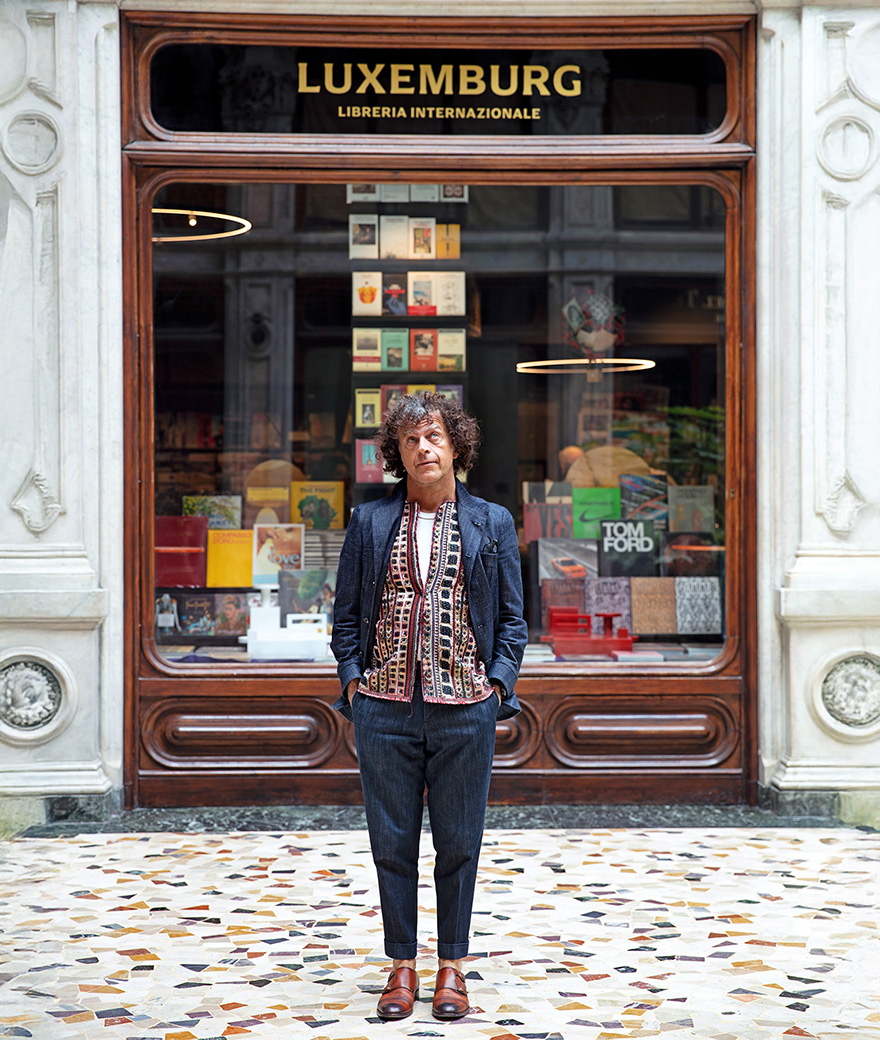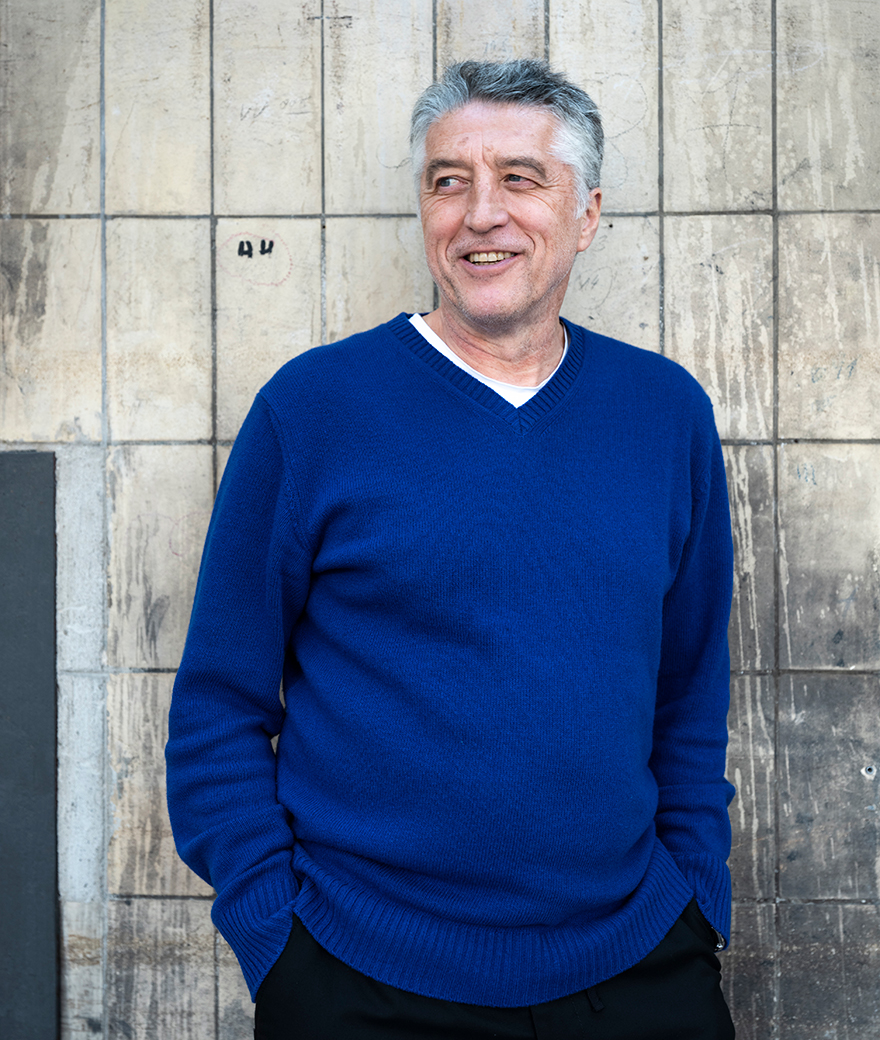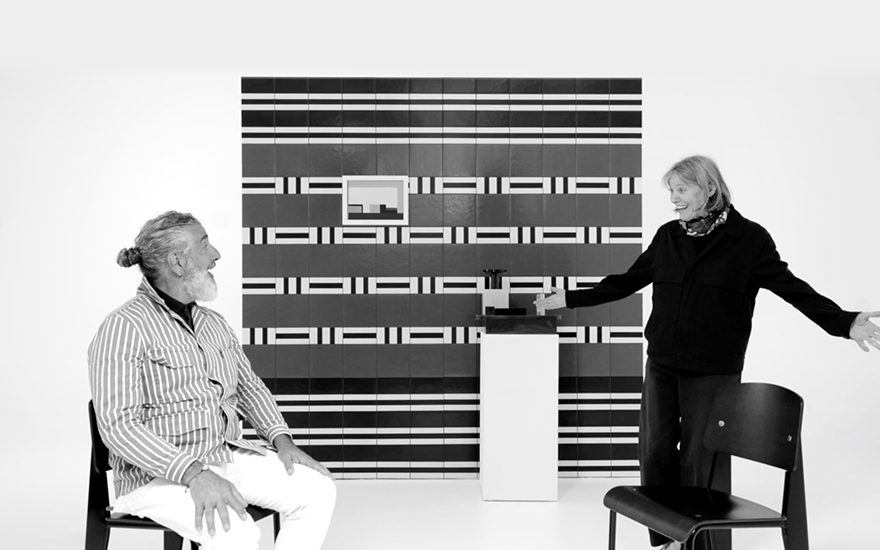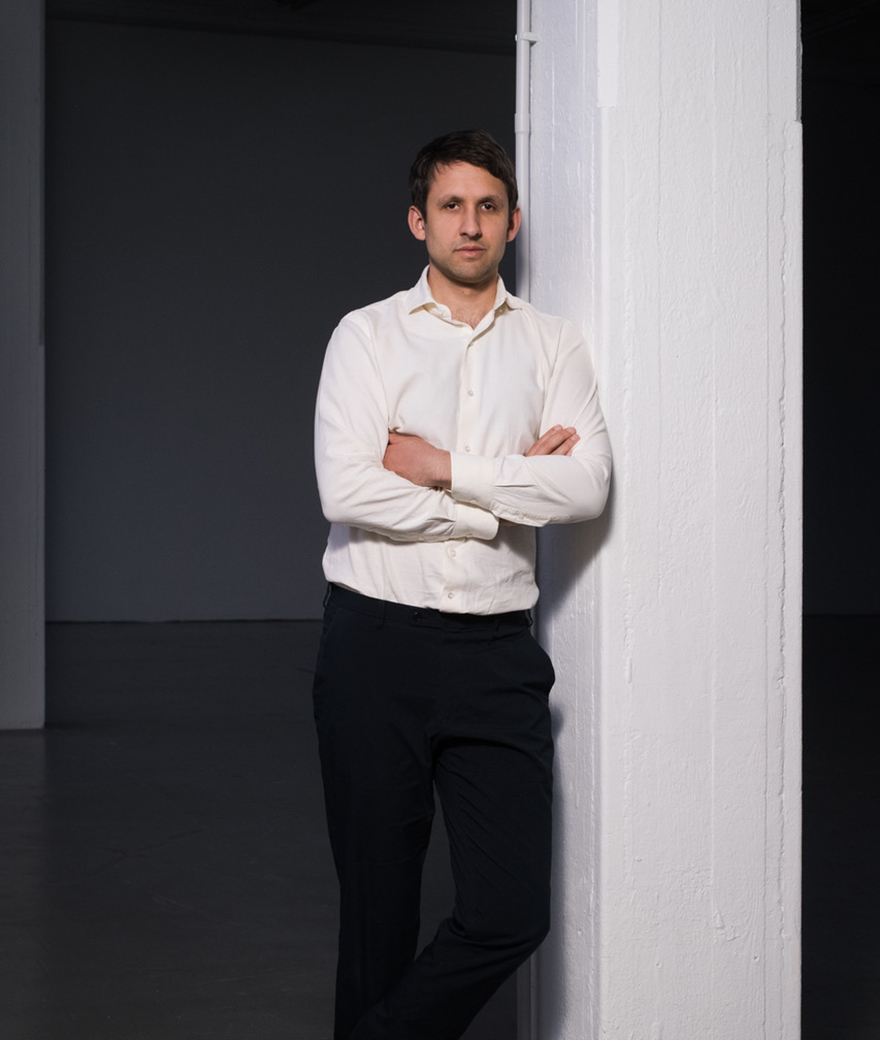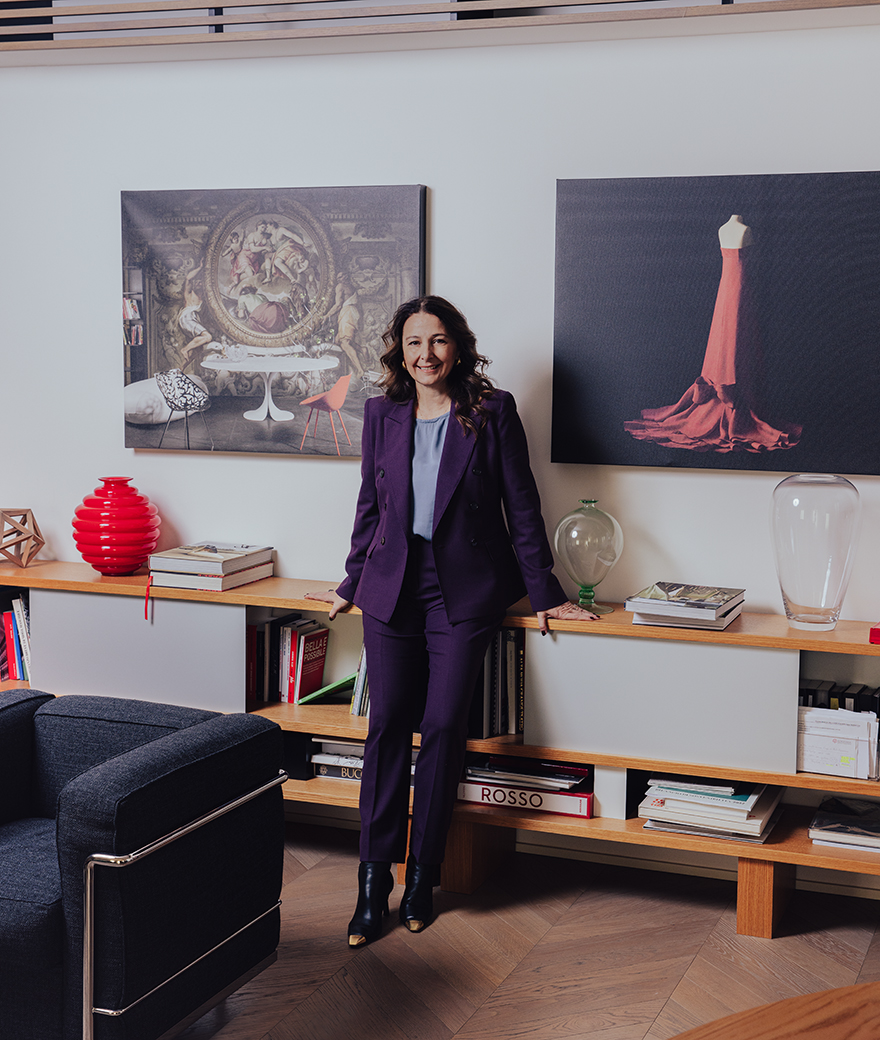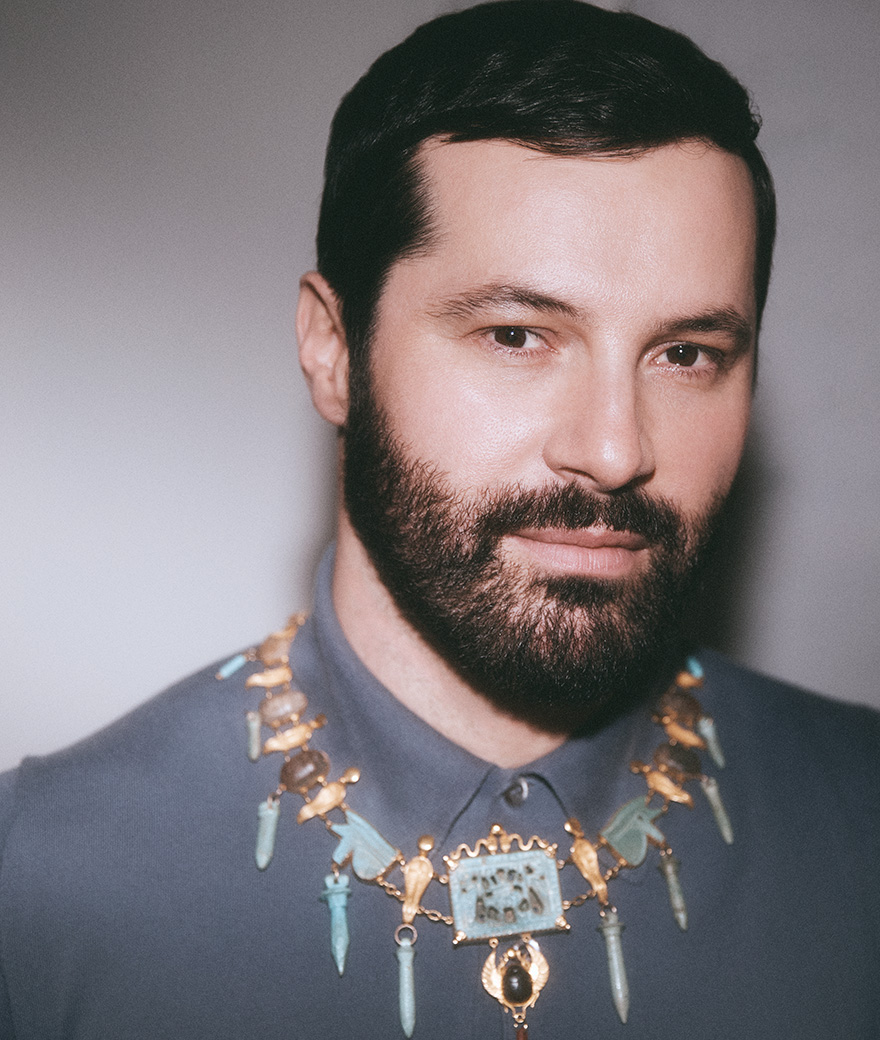A talk with Nicola Ricciardi
Photography by Piergiorgio Sorgetti
What’s the concept of the 26th edition of miart? How does it developed?
If the last edition of miart wanted to “re-tune the instruments” of the art market, the aim for 2022 is to kick off a new phase: the primo movimento (first movement, in English) of a possible symphony. Borrowed from classical music, this expression will guide the new edition of the fair – just like Dismantling the silence did for miart 2021.
Primo movimento represents the beginning of a musical form made of several parts, as well as a desire for acceleration within a field that feels ready to take a leap forward, considering the positive season of international fairs during the last autumn. Of course, there’s also a reference to art history and its temporal scan through movements between modern and contemporary, intertwining and influencing each other like the steps of a pair of dancers.
Is there a common thread which binds this theme to that of the previous edition, Dismantling the silence?
Besides the above given, we thought that the idea of movement was the natural continuation of poetry. Just like in 2021 the poetic lines brought miart closer to the institutions of the city, during the new Milano Art Week the movement will be embodied by a series of initiatives and collaborations with realities from the worlds of music, dance and performance, so that the fair would give an impulse to move all together: gallerists, collectors, artists, citizens and visitors. Because the perfect execution of a symphony is possible only if there’s collaboration and cohesion between baton, forearms, hands, fingers, gazes, faces, gestures and audience.
Is there a section of the fair that you found particularly interesting? Why?
I think that the Decades section curated by Alberto Salvadori is really beautiful, because it well represents di ideal of collecting more than a hundred years of history under the same roof – it’s one of the aspects that make miart unique. It is conceived as a time travel from the beginning of the 20th century until 2010. 10 galleries take part to this section, each with a project that represents a specific decade through personal presentations or themed insights. This year, the most interesting stands are the one dedicated to De Chirico from the Fourties by Artemisia Fine Arts, the Fifties’ body prints by Toti Scialoja presented by Galleria dello Scudo and, especially, Robert Mapplethorpe’s photographs from the Seventies brought by Franco Noero.
Primo movimento represents the beginning of a musical form made of several parts, as well as a desire for acceleration within a field that feels ready to take a leap forward, considering the positive season of international fairs during the last autumn.
How does miart contribute to the promotion of emerging artists and galleries?
We have a dedicated section, Emergent, that will be placed at the beginning of the exhibition project from this year, in order to guarantee as much visibility as possible. We’ll also have new dedicated prizes, proving the ever increasing interest for young realities. Of course, credit goes to curator Attilia Fattori Franchini, who created a laboratory for research and valorization of emerging artists, new galleries and innovative practices in the fields of language and experience. Among the most interesting participants of this year, I’d like to mention a few galleries with some of the most innovative programmes in Europe, such as the Paris-based Sans Titre (2016), or Sperling and Nir Altman, both from Monaco, as well as the Milanese Martina Simeti and Fanta-MLN.
The last edition of miart was held both in presence and virtually for the first time. Given that dialogue and exchange are fundamental moments when it comes to experiencing the fair – that’s why it is important to participate physically – what’s the role of the online fruition this year?
Hybrid art fairs worked well and we will pursue this format also for the 2022 edition. Personally, I think that the digital only fairs have showed several limits and it’s impossible to prescind from the physical experience. But it doesn’t mean that we should set aside the online – we should study more and observe it in direct drive, working on both dimensions at the same time.
How did your passion for contemporary art begin and develop?
On an unconscious level, I think my parents instilled in me their passion for art: they brought me to all the Impressionist exhibitions in Italy when I was a child, and I still remember the first time I visited the cathedrals of Ravenna, followed the itinerary of Piero della Francesca or entered the Louvre. But I developed the passion for contemporary art by myself, mostly through literature. If I have to identify a precise event when I first imagined contemporary art not simply as a passion but as a possible career, I would say the 2009 Venice Biennale: it changed completely my relationship with what I observe, in ways that I still don’t know how to explain.
Would you tell us about your first steps and experiences within the art field?
In 2010, after the Venice epiphany, I left the company I was working for to build a start up with two friends, with the aim of creating new connections between artists and potential sponsors. Coming to think of it, the idea was simple and extremely naïve, but it led to a series of lucky encounters and dialogues with artists which made me realize the importance of having a solid knowledge base. The desire to develop a series of curatorial tools brought me to work as a Resident Curator for a side-project at the Berlin Biennale, and then to New York, where I studied at the Center for Curatorial Studies of Bard College.
Are you familiar with Mutina? What do you like the most about the company?
Of course, I know Mutina and its collections very well. Me and my wife covered all the bathrooms of our previous house with Pico by Ronan & Erwan Bouroullec. What fascinates me the most is Mutina’s ability to reinterpret the designers’ work and identity – same goes for artists like Nathalie Du Pasquier! – and transform them into ceramic surfaces.
If you have to choose one of our collections, which one would it be and why?
I have a great fascination for Tratti by Inge Sempé. The elements are simple, almost elementary, but they have the ability to evoke deep sensations at the same time. They remind me of the vastness and infinity of Agnes Martin’s abstractions, as well as the particular yet personal memory of an old school notebook.
You are a curator as well as a contemporary art critic, but is there an artist from the past with whom you would have liked to work?
I don’t know what I’d have done to work – even only as a room attendant – at the Cézanne Drawing exhibition, which has been held the last year at MoMa in New York! I couldn’t visit it in person because of the health emergency, but the amazing catalogue has been enough to imagine that it was one of the most beautiful show of this decade. Like Woody Allen in Manhattan, I also think that “those incredible apples and pears paired by Cézanne” are one of the things that are worth living.
During the new Milano Art Week the movement will be embodied by a series of initiatives and collaborations with realities from the worlds of music, dance and performance, so that the fair would give an impulse to move all together.

